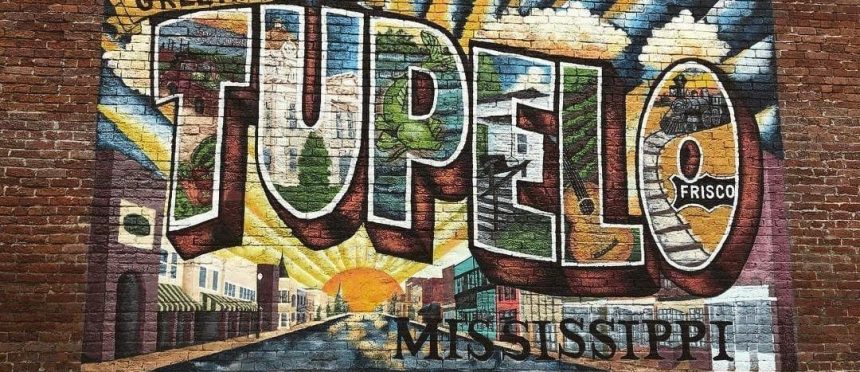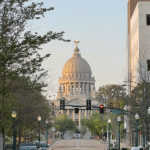Tupelo is most famously known as the birthplace of Elvis Presley, and while the city is where the King of Rock and Roll’s roots were initially planted, the northeast Mississippi town is a gem that takes you back through multiple eras of American history.
Visitors can expect to learn about Tupelo’s prominence from when the Chickasaw tribe occupied the land, during the Civil War, as the Civil Rights Movement hit its stride, and when Elvis was being molded and shaped into a global phenom all while indulging in local music and fine eats.

Elvis Presley’s Home and Museum
Elvis Presley came from humble beginnings as he was born in a two-room house in east Tupelo on January 8, 1935. For his 11th birthday, Presley’s mother bought him a guitar from Tupelo Hardware Company. He had previously discovered his love of music at the Assembly of God Pentecostal Church. 10 years after getting that guitar, Presley recorded his first gold record and continued to please concert crowds as well as radio and record enthusiasts alike.
The house Presley grew up in was built by Presley’s father for a mere $180. It now draws over 100,000 visitors from across the world annually and is part of the 15-acre Elvis Presley Park. The home is a Mississippi landmark and the centerpiece of the park which also includes a museum that chronicles his life, a statue of the King in his teenage years, his childhood church, and more.
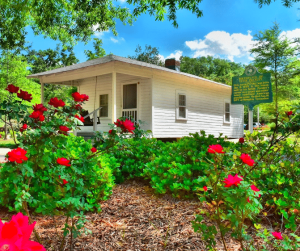
Driving tour
Visitors traveling by vehicle can hop in their cars to visit 14 significant landmarks and Presley’s birthplace as they embark on a journey to learn more about the chart-topping singer and how Tupelo played a giant role in developing the star into the icon he later became.
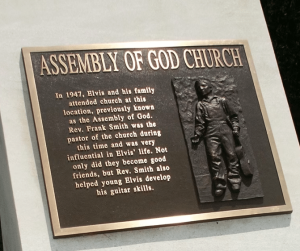
A full list of stops along the driving tour can be found here.
Guitar trail
More than 20 guitars dedicated to the King of Rock and Roll have become a permanent part of downtown Tupelo’s cityscape. Visitors are encouraged to locate the decorative displays and take pictures with them.
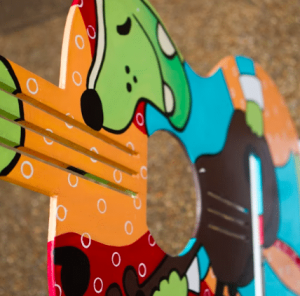
Statues and murals
Statues and murals commemorating Presley can be found all over the city of Tupelo. One of the most notable sculptings of the King of Rock and Roll can be found in the heart of downtown Tupelo near city hall. The statue honors Presley’s 1956 Homecoming concert at the city’s fairgrounds.
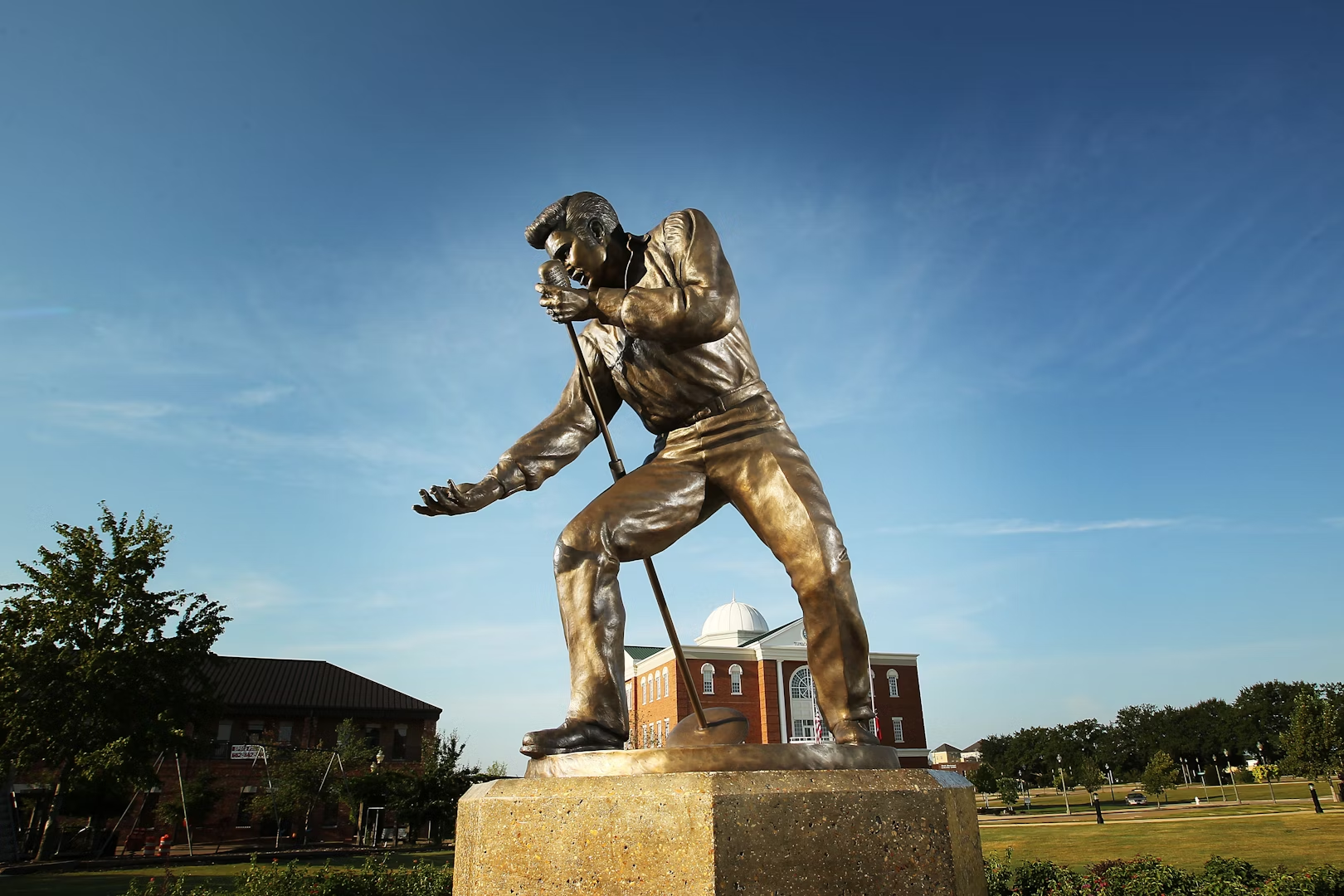
Other popular murals paying tribute to Presley include a “Jailhouse Rock” painting along the side of the former Kermit’s Soul Kitchen and the “1950s Elvis” design on Reed’s Department Store both located downtown.
Tupelo Elvis Festival
The King of Rock and Roll’s hometown plays host to a myriad of tribute events in memory of the musical legend. Going on for 26 years and running, Tupelo’s Elvis Festival features live music, panel discussions about the rock star, boxing, a 5K, and of course, an Elvis Presley tribute artist competition among other thematic festivities surrounding the man who rose to prominence as one of America’s most iconic performers.
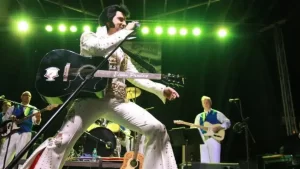
Native American History
Long before European settlers arrived on the North American continent, the Chickasaw people occupied the land where Tupelo sits. The Chickasaw people have a deep-rooted history in Tupelo. The native nation cemented its stronghold in the area in 1736, reigning victorious over a group of imperialistic French soldiers during the infamous Battle of Ackia, which ultimately led to the European country losing the French and Indian War.
The Chickasaw people thrived in Tupelo, living a largely agrarian lifestyle where they cultivated crops, fished, and hunted deer, bear, buffalo, and turkey before the Indian Removal Act of 1837 forced their relocation.
Now, officials are preparing to unveil a world-class facility, known as the Chickasaw Heritage Center, that will foster a comprehensive educational experience for Chickasaw citizens, the people of Mississippi, and the general public. Attendees will be told the Chickasaw story from a native perspective.
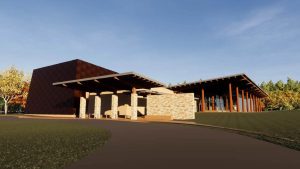
Though an official date for the center’s grand opening has yet to be announced, officials are working to have the educational facility up and running soon.
Civil War History
The final battles of the Civil War in Mississippi were fought in and around Tupelo. From Confederate victories at the Battle of Brice’s Crossroads to Union victories at the Battle of Tupelo/Harrisburg and the Battle of King’s Creek, Tupelo played an important part in the war that split the nation.
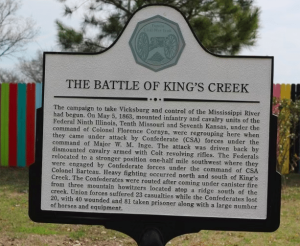
The last stands of the Confederate cavalry in Northeast Mississippi occurred in Tupelo in the summer of 1864. Military history was made at the sites marked on the Civil War Trail, telling Tupelo’s story during a dark time in America’s story.
Civil Rights Trail
Tupelo also rests in the thick of where the civil rights movement garnered momentum and resulted in change in the South. The city holds six spots featured on the trail paying tribute to the people and places that played a critical role in fighting for equal rights.
Carver School
Named after Black inventor Dr. George Washington Carver, Carver School was built in 1939 to serve the educational Tupelo’s African-American children. Carver, along with local churches, was the center of social activities for the African-American community.
The Desegregation Act of 1954 did not affect Carver directly until 1965 when “freedom of choice” took the place of “separate but equal.” When the federal government mandated that all schools in the South must integrate, Carver School became a meeting center for the Black community. After total desegregation, Carver School became the ninth-grade center for all Tupelo school children and currently houses an elementary school. Today, Carver stands as a monument to the Tupelo educational system and the many thousands of school children whose education has been advanced there.
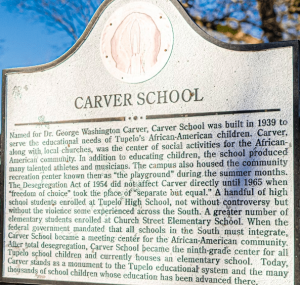
Spring Hill Missionary Baptist Church
Established during the 1850s, Spring Hill Missionary Baptist Church is the oldest African-American Church in Tupelo. The original sanctuary, still standing today, was completed in 1921 and is one of the oldest surviving church buildings in all of Tupelo. Spring Hill has been a place of worship for many years and has also been an advocate for the rights of both its congregation and the Black community as a whole.
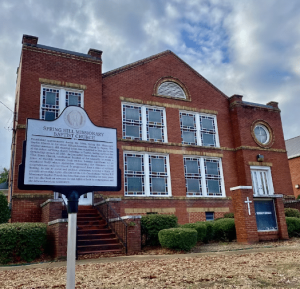
Robins Field
Built in 1927, Robins Field was named for former Tupelo Mayor D.W. Robins and served as Tupelo public schools’ football field until 1991. On Friday nights during segregation, the all-white Tupelo High School Golden Wave football team played at the facility, while the state champion all-Black Blue Devils of Carver High School played at Robins Field on Saturday nights. In much of the South and Mississippi, Black schools often had inferior facilities that lacked amenities for football. In Tupelo, even before desegregation, crowds both Black and white showed up to see the Carver Blue Devils’ football games and to hear the award-winning “G.W. Carver Band.” Tupelo High School football and track star Frank Dowsing played on Robins Field and broke racial barriers. Dowsing went on to become one of Mississippi State University’s first two African-American athletes, setting records as a defensive back and kick returner, and was voted Mr. MSU.
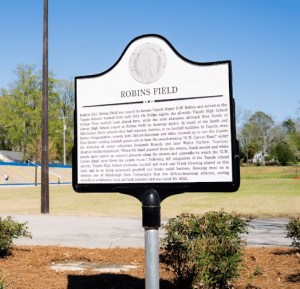
Dixie Belle Theater
Tupelo’s 300-seat Dixie Belle Theater, located at 407 Spring Street, operated exclusively for African-Americans from 1950 to 1955 and served an important role in the community. Many adults and children enjoyed escaping to watch movies of the times. As part of the social center for the Black community on Green Street, touring blues, jazz, and R&B acts performed at the Dixie Belle.
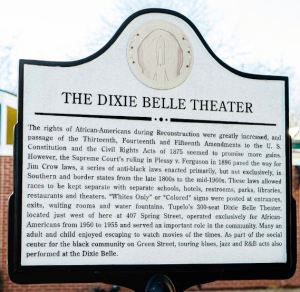
F.W. Woolworth
During the 1960s, F. W. Woolworth Company operated lunch counters on a “local custom” basis — or racially segregated seating. As the movement to resist segregation grew, the Tupelo Woolworth store lunch counter was the scene of local protests. While other sit-ins were contentious, the Tupelo events were peaceful. In 1964, the passage of the Civil Rights Act prompted Woolworth to announce its desegregation.
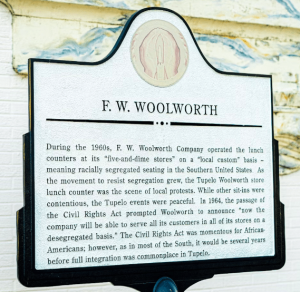
Shake Rag District
Shake Rag, located east of the old M&O railway tracks and extending northward from Main Street, was one of several historic Black communities in Tupelo. By the 1920s, blues and jazz flowed freely from performers at Shake Rag restaurants, cafes, house parties, and later from jukeboxes, while the sounds of gospel music filled the churches. The neighborhood was leveled and its residents relocated during an urban renewal project initiated in the late 1960s.
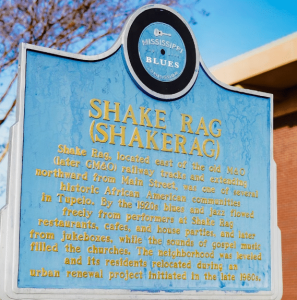
Dining
Like many towns in Mississippi, Tupelo is home to some of the finest cuisines one can find. However, unlike most of the Magnolia State, the city has multiple local spots with Elvis-themed ambiance, food, and drinks.
Cafe 212
Located on West Main Street, Cafe 212 is a locally-owned lunch shop with an eclectic atmosphere featuring work from local artists. The restaurant serves gourmet sandwiches, soups, and desserts, as well as their signature Blue Suede Grill — the establishment’s version of Elvis’ favorite peanut butter and banana sandwich.
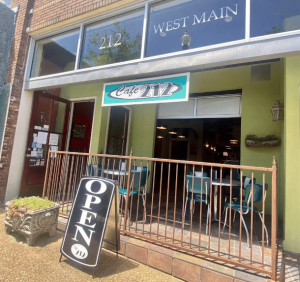
D’Cracked Egg
A family-friendly breakfast-themed restaurant that serves morning favorites such as french toast, pancakes, and omelets as well as unique items such as waffle sandwiches all day long, D’Cracked Egg on Troy Street brings a homey feel to both visitors and locals.
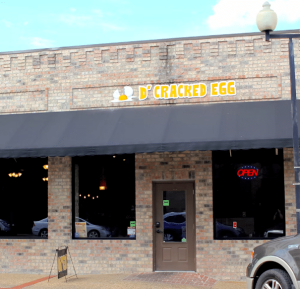
Just Love Coffee Cafe
Coffee and espresso enthusiasts are highly encouraged to head out to Just Love Coffee Cafe on North Gloster Street. Tired of ordering the stereotypical latte? Try the “Pink Cadillac” or the “Skinny Caddy,” both Elvis-inspired sips to get a caffeine fix while exploring the King of Rock and Roll’s hometown.
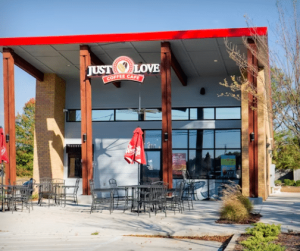
Crave
If you have a sweet tooth, then Crave is your spot. Tupelo’s dessert café and gourmet coffee shop on East Main Street features the Shakerag, a whiskey-flavored espresso drink with caramel. Named for the historic African-American neighborhood where Elvis was influenced by the rhythm and blues music he heard there, folks can enjoy a variety of sweet treats including fresh pastries and popular skillet cookies.
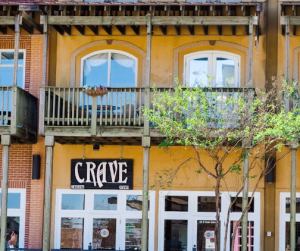
Entertainment
The spirit of the King of Rock and Roll is alive and well in Tupelo with local live music, concerts from traveling artists, and a soulful variety of performances coming routinely to the town where Presley once walked.
Lyric Theatre
The Lyric Theatre is the home of where Presley would climb over a divider in the balcony to sit among his Black friends. The landmark is also the place where Presley is rumored to have had his first kiss. Since the venue became the Tupelo Community Theatre in 1969, more than 200,000 patrons have enjoyed 250+ productions.
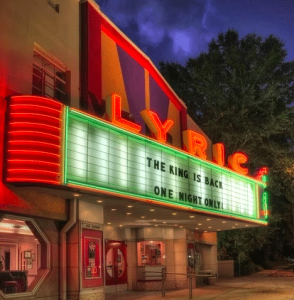
Blue Canoe
Blue Canoe is a laid-back, funky joint that is commonly known as Tupelo’s home for original live music. Visitors looking to soak up the Mississippi soul are encouraged to take a trip down to the venue on North Gloster Street, grab something to eat and drink, and listen to the sounds of locals reiterating why Mississippi is the birthplace of America’s music.
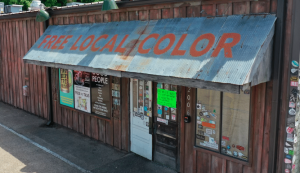
Cadence Bank Arena
Looking to catch a major concert, monster truck show, or even sporting event while enjoying Elvis’ birthplace? Look no further than Cadence Bank Arena, a 10,000-seat multipurpose arena that continues to hold events for all audiences. Upcoming events at the venue can be found here.

The above article is one of eight stories that will be presented by SuperTalk Mississippi News throughout the summer months, highlighting some of the “gems” that make Mississippi a great place to live, work, and play.


